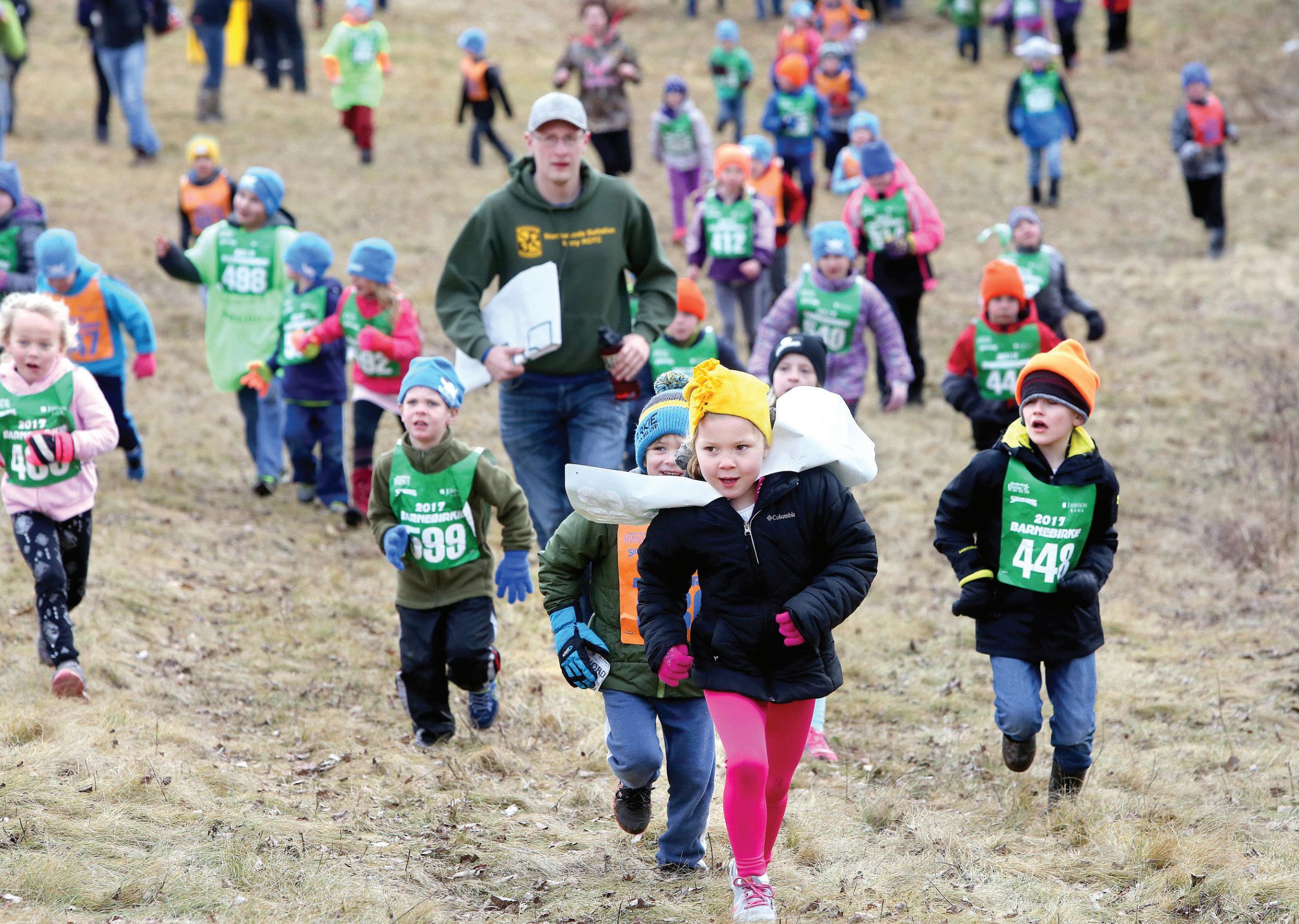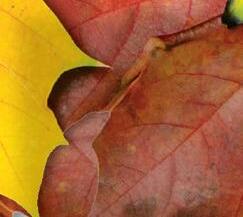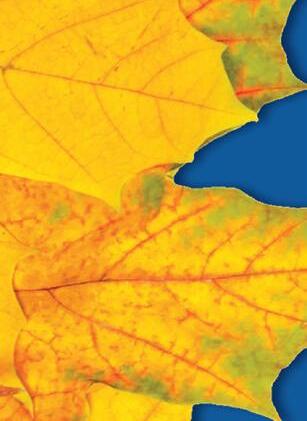
9 minute read
Northland piles up examples, impacts of changing climate and warmer weather
By John Myers jmyers@duluthnews.com
Minnesota Extension climatologist and a well-known expert on Minnesota climate issues, told the News Tribune after the June 2012 flood that devastated the Duluth area after more than a foot of rain fell in just a few days. (That same summer, some Minnesota counties were declared federal disaster areas due to drought.)

Other scientists have described it as Mother Nature on steroids: Sure, she hit home runs before, but not this many.
Wherever you stand on what humans should do to slow or stop the change, no one can seriously argue with the impacts.
Our nights are warmer than they were 50 years ago, data shows, especially in winter.
We have fewer 20-below-zero days, data shows. Data shows our inland lakes have weeks less ice cover than they did before, about 20 days less than the late 1800s, with earlier ice-outs and later freeze-ups. That change has accelerated over the past 40 years. (A 2010 study by University of Minnesota fisheries scientists found that walleyes are spawning earlier than ever, too, following the earlier ice-out. It’s not clear what that means for walleye populations.)
Cardinals winter in Duluth now, and that didn’t happen decades ago. We see opossum squished on our highways where they never lived before. Bugs like larch beetles are moving north into new territory.
Seeley is an expert at digging through data to find the facts — many are included in his book “Minnesota Weather Almanac” — like the fact that Minnesota’s average winter low temperature has increased by 4.5 degrees since early records were kept. Fourteen of Minnesota’s 16 warmest winters on record have occurred since 1980.
Most stark, Seeley said, is that morning low temperatures are warming at double the rate of afternoon highs, so many people may not notice the rapid change.
“Certainly, for northern Minnesota, the warming of winter is very significant, more to do with minimum temperature than maximum temperature. Also the shrinkage, in terms of calendar days, in the snow cover season and the ice cover season on lakes” is obvious, Seeley told the News Tribune in September.
Winter rain
Last season the all-outdoors Duluth Heights youth hockey program couldn’t flood its rinks until well into December, weeks later than years past, because of warm weather. Then a Christmas thaw and rain ruined the ice.
Volunteers laid the ice again, only to have it wrecked by rain and above-freezing temperatures twice more. Just as ice conditions got good the outdoor skating season came to a screeching end across the region with six straight days of high temperatures in the upper 40s and 50s starting Feb. 17. (That period was so warm, followed by normal cold later, that it caused damage in shrubs and plants that were fooled into thinking it was spring.)
The lack of snow in late February forced the cancellation of the annual American Birkebeiner cross-country ski race for just the second time in its 44-year history.
Among the most obvious impacts of our warmer weather is how much more rain we are getting in winter. Throughout the second half the 20th century, Duluth averaged about 12.6 rain (without snow)
Continued on page 16 events from November through April. In the first 17 years of this century that number has hit 17.2 days, 37 percent more winter-month rain events.
But in just the past seven winters, since 2010, Duluth has seen an average of nearly 18 days with winter rain instead of snow — nearly 50 percent more than the 20th century average.
It’s not just that you thought it was raining more in winter — it is. This is data. It’s already happened.
Look at how many days Duluth had precipitation when the low temperature remained above freezing. In the second half of the 20th century, from 1948 to 1999, Duluth averaged just 7.1 winter-season days with lows above freezing and some precipitation. But in the past seven years, that number has jumped to 12.1 days — 72 percent more warm-day winter precipitation events.
“Duluth is getting more winter precipitation, and both rain and snow are increasing. The number of days with snow, however, have fallen slightly, while the number of days with rain and no snow have risen dramatically,” said Kenny Blumenfeld, senior climatologist at the Minnesota State Climatology Office who compiled the rain data for the News Tribune. “The period from November through April, when Duluth sees the vast majority of its seasonal snow total, is now over 50 percent more likely to experience precipitation with temperatures entirely above freezing than it was during the second half of the 20th century.”

Less ice more often
Then there’s the ferry line that shuttles people and vehicles between Bayfield and Madeline Island. For 141 years the ferry always shut down in winter, usually in January, when thick ice covered Lake Superior in the Apostle Islands.
But in 1999 the ferry kept operating all winter, with little ice to impede its way. Then it happened again in 2012, and in 2016 and yet again in 2017. The ferry just kept running, with ice never thick enough to stop it.
A study by a Bayfield student and based on Madeline Island ferry records found 45 fewer days of ice cover on average by 2007 compared to 1857, the year Bayfield was founded and freeze records began. The analysis showed ice cover was declining at an average of one-third day each year. From 1982 to 2007, the decline sped up to one day less of ice cover each year. If that pace continued, there would be no solid winter ice between Bayfield and La Pointe after 2037.
Meanwhile, a study by University of Minnesota Duluth professor Jay Austin released in 2012 that made headlines worldwide found a 71 percent reduction in Great Lakes ice cover from 1973 to 2010, thanks to longer autumns, earlier springs and warmer winters. Annual Lake Superior ice cover declined 79 percent over that period. (Another study by Austin found Lake Superior’s summer surface water temperature had risen 4.5 degrees from 1979 to 2007.) Similar studies of northern lakes worldwide have found similar warming trends.
Northern forests changing







Lee Frelich, a University of Minnesota scientist and a leading expert on the history of northern Minnesota forests, says it’s hard to pick among the most obvious examples of climate change here at home because there are so many.


“It’s a tossup between the dead birch on the North Shore — which resulted from several warm, dry summers in a row — and the red maple invasion into the boreal forests in the BWCAW,” Frelich said. The maples are moving north, taking over from spruce and other conifers, due to “a lack of extreme winter minimum temperatures” that once kept red maple south. Again, these are changes that have already occurred due to our warmer climate. What’s next? Frelich predicts many of us will see even greater changes yet in our
Continued on page 18 lifetime. Some of them seem almost biblical.
“Coming up are massive waves of tree mortality for many species and many causes — droughts, native insect outbreaks, native disease outbreaks, exotic diseases and insects, and diseases and insects from further south... storms, fires,” Frelich predicted.
Frelich notes that the larch beetle, once held in check by cold winters, has this year eaten its way across 800,000 acres of Minnesota forest, the most ever.
“This summer I saw an old-growth white cedar forest on Juniper Island in Lake Vermilion, with trees 100-to-400-plus years old, that turned totally brown,” Frelich said. DNR officials say it may be a fungus that moved up from the south; Frelich thinks it could be a leaf insect larvae — a leafminer — that also moved north. Neither had been documented that far north before.

“It’s too early to tell if the trees will recover,” he said. “We’ll have to wait until next growing season.”
Good for gardens, but sometimes too much rain
On average (not every year, but more years than not) we’re seeing our last frost of winter earlier and our first frost of autumn later.
But it’s not just because the growing season is longer that we can grow heirloom tomatoes, big pumpkins, sweet corn and squash in the Northland when our grandparents wouldn’t have dreamed of planting those crops in their gardens. Nor is it just because there are new, faster-growing varieties of the vegetables.
It’s also because the Northland is seeing more warmth during most summer growing months, especially at night, Bob Olen, horticulturist, longtime county extension agent and co-host of “Great Gardening” on local public television, told the News Tribune.
“Even if you don’t have a frost, if you get cold nights, a lot of plants just shut down every night. And when that happens you don’t get maturity,” Olen said before a gardening seminar last year. “But now, we’re getting more (warmth) to our summers, especially at night. And that’s helping along some of these (plantings) that we wouldn’t even have looked at 20 or 30 years ago.
But a warmer atmosphere also holds more moisture. Sometimes too much. Our gardens are getting more downpours, data shows. But we’re also seeing more droughts. More rain is coming in storms which hit smaller areas, meaning some areas get lots and other areas get little.
This summer, for example, Duluth saw at least a trace of rain (and often more) on 62 of the 102 days between Memorial Day weekend and Labor Day. But less than 200 miles away, northwestern Minnesota was locked in a moderate to severe drought, with little rain all summer. (In September, Duluth sat more than six inches above normal for rainfall for the year while Grand Forks, N.D., sat five inches below normal.)
Data shows 80 percent of the weather reporting stations across Minnesota are seeing significantly more rain than they did 50 years ago, Seeley said. Grand Rapids now averages 4.5 inches more rain each year than it did 50 years ago.
There are warm-weather and cool-weather crops, Olen noted — but no good wet-weather crops.
“Of course we want adequate moisture. But this year we had so much rain that we’ve seen a big increase in fungal diseases. That’s probably our No. 1 pest in our region, and that’s the trend as we get more rain,” Olen said, noting that keeping more space between plants is key, as well as keeping them exposed to sun and wind. “We can’t control the rainfall. But we can manage it by keeping the crop as dry as possible between the rains.”
Data shows that rain is coming down harder. Our warmer, moister atmosphere is bringing fewer widespread gentle rainfalls and more gully-washers, Seeley said. Minnesota has seen multiple 9-inchplus rainfalls in the past five years.

“We used to average about 60 percent of our total precipitation from big thunderstorm events. Now that’s closing in on 75 percent,” Seeley said.
He added another point: These aren’t projections. The change to warmer, shorter winters, bigger storms, higher dewpoints and more rain has already happened over the past 50 years. The next 50 years are expected to bring even more change.
More warmth, more deer, fewer moose
Plants and animal species on the edge of their larger range are the most affected by climate change. Southern species can move north and northern species have to move farther north to find the right conditions. “Pine marten, spruce grouse, lynx... a lot of animals are on the southern edge of their range here that are being hit by this,” said Mike Schrage, wildlife biologist for the Fond du Lac Band of Lake Superior Chippewa.
Warmer weather both in summer and winter are seen as the underlying reason why Northeastern Minnesota’s moose population has crashed in recent years — the same underlying reason cited for the nearly complete eradication of moose in northwestern Minnesota a decade ago.
A population estimate based on aerial surveys in January showed about 3,710 moose remaining in Northeastern Minnesota, down 58 percent from 8,840 moose in 2006.
Warmer weather in summer means moose have more heat stress, more days above 70 degrees when they simply don’t eat much and don’t gain enough weight to sustain them over winter.
A long-term trend to warmer, less-snowy winters means more deer moving north, and more deer per square mile. Deer carry a brainworm parasite that’s harmless to whitetails but fatal to moose. They also carry liver flukes which at times can harm moose.
Our shorter winters also mean longer seasons for ticks, which can accumulate on moose enough — sometimes tens of thousands of ticks on one moose
— that they cause blood loss and hair loss, often at the end of winter when moose are at their most vulnerable.
“It’s not as simple as higher temperature means fewer moose… but that’s what’s happening,” Schrage said.
Moose evolved for millennia with wolves, their primary predator. But they have had to deal with deer in high numbers for only a few decades. Deer, Schrage agreed, are far more of a problem for moose than wolves.
“If we continue to have later falls and earlier springs and shorter winters... the more deer, the higher the deer densities we’ll have,” Schrage said. “And deer just bring so many problems that moose aren’t going to make it.” u









